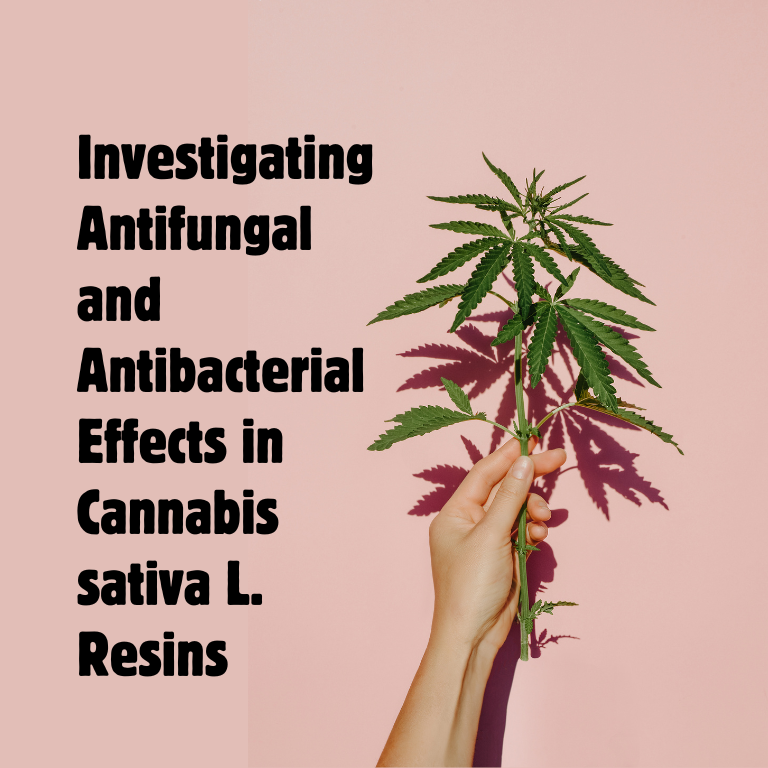The Antimicrobial Potential of Cannabis sativa L. Resins

Exploring Antifungal and Antibacterial Properties of Cannabis sativa L. Resins
Cannabis sativa L., commonly known as hemp, has been used for centuries for its medicinal properties. While it is widely recognized for its psychoactive and therapeutic effects, recent research has unveiled its potential antifungal and antibacterial properties. The resins produced by Cannabis sativa L. contain various cannabinoids and terpenes that may offer significant antimicrobial benefits. This article delves into the antifungal and antibacterial properties of Cannabis sativa L. resins, exploring their potential applications and implications for modern medicine.
Understanding Cannabis sativa L. Resins
The resin of Cannabis sativa L. is a sticky, sap-like substance produced by the glandular trichomes on the surface of the plant, particularly on the flowers and leaves. This resin is rich in cannabinoids, such as tetrahydrocannabinol (THC) and cannabidiol (CBD), and terpenes, which are aromatic compounds responsible for the plant’s distinctive smell. These compounds are believed to contribute to the plant’s defense mechanisms against pests, pathogens, and environmental stressors.
Antifungal Properties of Cannabis sativa L. Resins
- Mechanism of Action
Research suggests that the antifungal properties of Cannabis sativa L. resins may be attributed to the cannabinoids and terpenes they contain. These compounds can disrupt the cell membranes of fungi, inhibit the synthesis of essential proteins, and interfere with the replication process. This multi-targeted approach makes it difficult for fungi to develop resistance.
- Effective Against Various Fungi
Studies have shown that Cannabis sativa L. resins can inhibit the growth of several pathogenic fungi, including Candida albicans, Aspergillus fumigatus, and Trichophyton mentagrophytes. These fungi are responsible for common infections such as candidiasis, aspergillosis, and ringworm, respectively. The effectiveness of cannabis resins against these fungi highlights their potential as natural antifungal agents.
- Potential Applications
The antifungal properties of Cannabis sativa L. resins could be harnessed in various applications. For instance, they could be used in the development of topical treatments for skin infections, oral rinses for fungal mouth infections, and preservatives for food and agricultural products. Additionally, these resins could serve as alternatives or adjuncts to conventional antifungal medications, which often face issues of resistance and side effects.
Antibacterial Properties of Cannabis sativa L. Resins
Mechanism of Action
Similar to their antifungal effects, the antibacterial properties of Cannabis sativa L. resins are believed to result from the action of cannabinoids and terpenes. These compounds can disrupt bacterial cell walls, inhibit the synthesis of critical enzymes, and prevent the formation of biofilms, which are protective layers that bacteria create to shield themselves from antibiotics.
Effective Against Various Bacteria
Cannabis sativa L. resins have demonstrated activity against a wide range of bacterial pathogens, including Staphylococcus aureus, Escherichia coli, and Streptococcus mutans. These bacteria are responsible for infections such as MRSA (methicillin-resistant Staphylococcus aureus), urinary tract infections, and dental caries, respectively. The broad-spectrum antibacterial activity of cannabis resins underscores their potential as versatile antimicrobial agents.
Potential Applications
The antibacterial properties of Cannabis sativa L. resins can be utilized in multiple areas. They could be incorporated into topical ointments for treating bacterial skin infections, formulated into mouthwashes for preventing dental plaque and gum disease, and added to wound dressings to reduce the risk of infection. Furthermore, these resins could be explored as natural preservatives in personal care products and food items, reducing the reliance on synthetic chemicals.
Challenges and Future Directions
While the antimicrobial properties of Cannabis sativa L. resins are promising, several challenges must be addressed before they can be widely adopted in medical and commercial applications.
Standardization and Quality Control
Ensuring the consistent quality and potency of cannabis resins is crucial for their effective use. Variability in cannabinoid and terpene content can affect the antimicrobial efficacy of the resins. Standardized extraction and formulation processes are necessary to produce reliable products.
Regulatory Hurdles
The legal status of cannabis varies globally, and regulatory frameworks for its medical and commercial use are still evolving. Navigating these regulations can be complex, particularly for products containing THC, which is psychoactive and subject to stricter controls.
Further Research
More extensive research is needed to fully understand the mechanisms underlying the antifungal and antibacterial properties of cannabis resins. Clinical trials are essential to evaluate their safety, efficacy, and potential side effects in humans. Additionally, studies should explore the synergistic effects of cannabinoids and terpenes with existing antimicrobial agents.
The antifungal and antibacterial properties of Cannabis sativa L. resins present exciting possibilities for natural, plant-based antimicrobial agents. Their effectiveness against a range of pathogenic fungi and bacteria highlights their potential applications in medicine, agriculture, and personal care. As research continues and regulatory landscapes evolve, cannabis resins could become valuable tools in the fight against microbial infections, offering alternatives to traditional treatments and contributing to public health.











